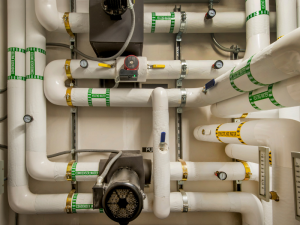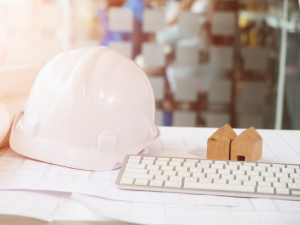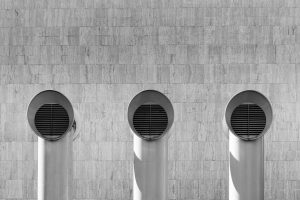Safety in your restaurant is something you do not want to compromise. Besides the safe storing, handling, and food preparation, you cannot afford to overlook restaurant drain cleaning.
In a typical restaurant, lots of food scraps, oils, and grease end up down the facility’s drains. This waste puts your plumbing system at risk of getting clogged or developing serious plumbing problems in the future. To avoid this, scheduling an appointment for drain cleaning services is better.
The accumulation of debris in the drain may cause a host of problems that may spell trouble for your restaurant. That is why it’s common for restaurant floor drains to be sources of foul smells. This is an indication that the drains are in bad shape and require a thorough cleaning.
If you are not sure how to keep your restaurant drains clean and healthy, here are the restaurant drain cleaning basics.
Run Boiling Water Down Restaurant Sinks
Running boiling water down the drains helps loosen debris such as oils and grease that are usually found in restaurant drains. Because of the volume of greasy foods that are prepared in restaurants, oils and grease are a big source of drain residue.
Therefore, you need enough boiling water to flush out the residue. For effective results, run the boiled water down the drains for at least ten minutes to remove the most stubborn debris.
Hot water can also be used as a restaurant drain cleaner for partial clogs because it breaks down solid food scraps that are byproducts of food preparation. Most of these food scraps will often end up in your restaurant drains.
While hot water is effective for cleaning most restaurant drains, it might not be sufficient when it comes to clearing severe clogs. It is, therefore, advisable to use it in combination with other more effective methods.
Please note that you need to exercise a lot of caution when handling boiling water. Make sure you are extra careful so that the water does not scald you or spill on others.
Use a Fat Trap
Sometimes prevention is easier than a cure. So instead of waiting for fats and grease to block your restaurant’s drainage system, you can be proactive and get yourself a fat or grease trap. This is a metallic structure designed to hold oils, fats, and grease from a restaurant’s kitchen thus preventing them from flowing down the drains.
As wastewater flows through the kitchen drains, the fat trap collects any oils and fats that have been dumped in the sink. Eventually, the organic fats, oils, and grease separate from the wastewater and float to the top. All other solid wastes will sediment at the bottom of the trap.
If you are not careful, the fats, grease, and oils may build up in the trap over time until there is no more room. This may lead to spillage or backflow of residue, which shouldn’t happen. To avoid this, always remember to carry out a proper and timely fat trap cleaning.
You can do fat trap cleaning by yourself or seek the services of a professional to do the work for you.
Generally, it is advisable to seek the services of a professional, especially if you lack the requisite experience in fat trap cleaning. An experienced plumber will take less time and will possess information on how to correctly handle the fat trap.
Use a Sink Strainer to Prevent Solid Waste from Going Down the Drains
A sink strainer is a great component in restaurant drain cleaning. It allows water and other liquids to pass through but traps other waste. Commercial grade sink strainers are the best for restaurant drain cleaning because they are more efficient.
A sink strainer catches all the stray debris that might end up in your restaurant drains and cause blockages or corrosion of the pipes. In other words, it keeps almost all kinds of waste off your restaurant drains thus preventing costly blockages.
Furthermore, because there is no accumulation of physical debris, your kitchen sink will be kept free of bacteria, rotten food scraps, and foul odors.
Employ Camera Inspection for the Restaurant Drains
A periodic camera inspection of the drains is an excellent addition to your restaurant drain cleaning arsenal. You should seek the services of a professional plumber to help you with the camera inspection.
Camera inspections come in handy when cleaning becomes impossible because you can’t tell where the clog is. But thanks to recent technology, plumbing work has been made easier. These miniature cameras can be employed to inspect clogged drains and accurately establish the depth and cause of clogs.
However, you don’t have to wait until the situation is dire for you to use the camera inspection method. You can have it done periodically as a proactive restaurant drain cleaning measure.
This method is highly accurate and can be used to make recordings, useful as a reference in the future.
Use Hydro Jetting to Keep the Restaurant Drains Clear
Restaurant floor drain cleaning is somewhat challenging because of the complexity of the drainage system and the scale of residue involved. So you need to go for a drain cleaning method that can handle such a task.
At the moment, hydro jetting is arguably the most effective method. It uses highly pressurized water to clear drainage systems. It can penetrate any drainage system no matter how complex.
For this reason, no residue will be left behind in your drains because the pressurized water flushes out everything including stubborn blockages that may have formed in pipes.
Hydro jetting also removes any foul odors that might be emanating from your drains due to the accumulation of debris. This is important for a restaurant environment that should stay clean and hygienic at all times.
So if you are looking for comprehensive restaurant drain cleaning, hydro jetting is the ideal solution. It will leave your drains clear, healthy, and smelling fresh.








